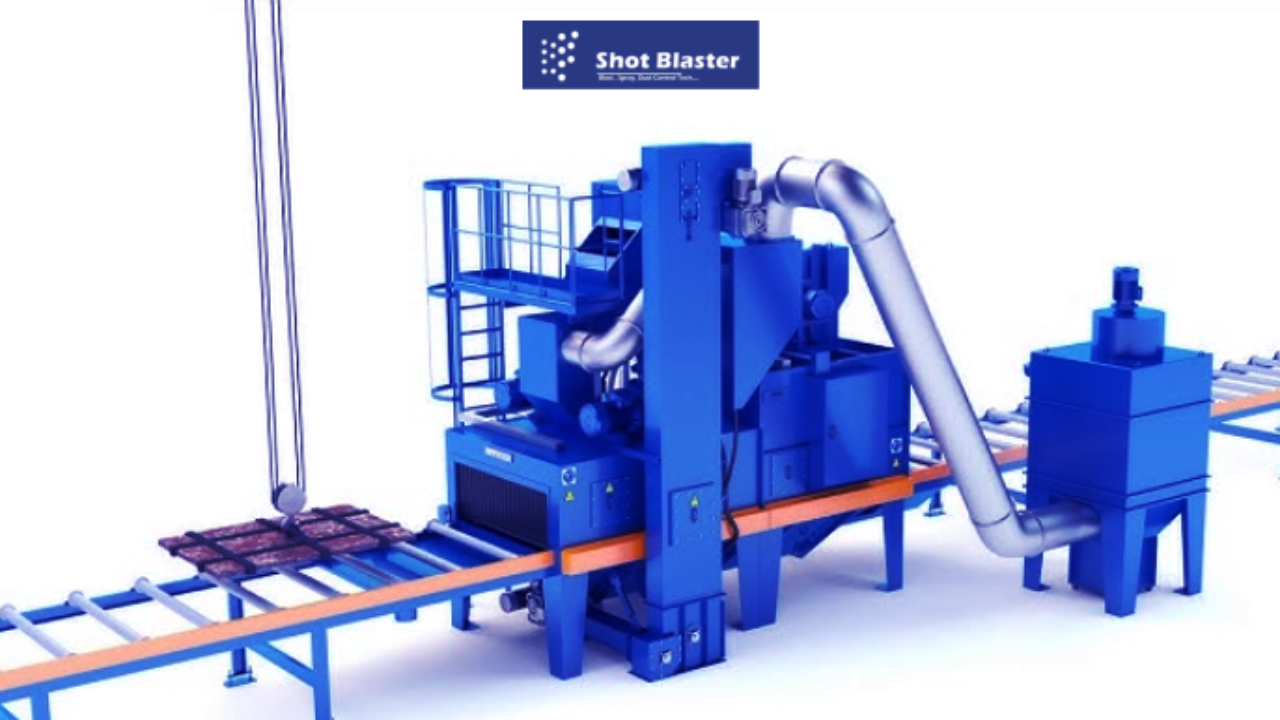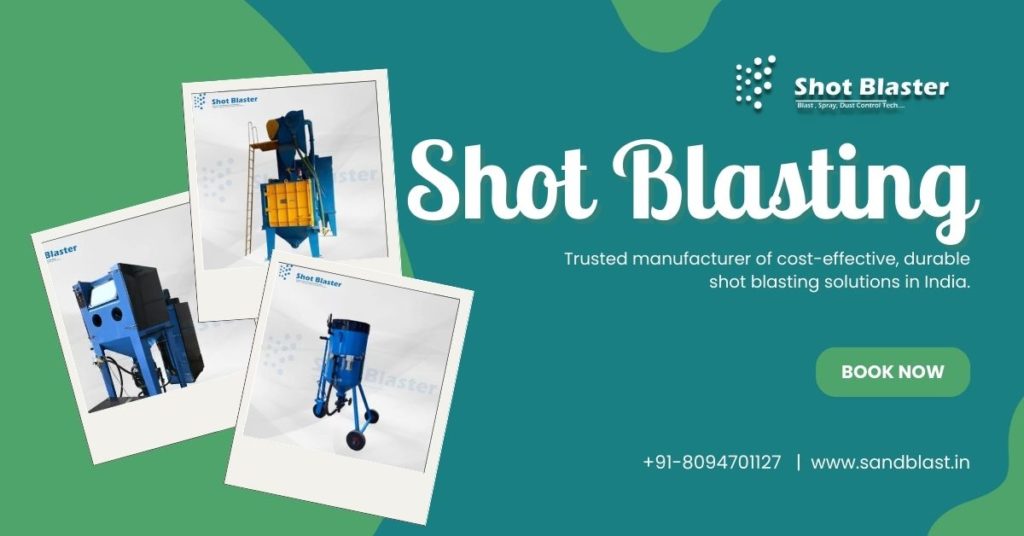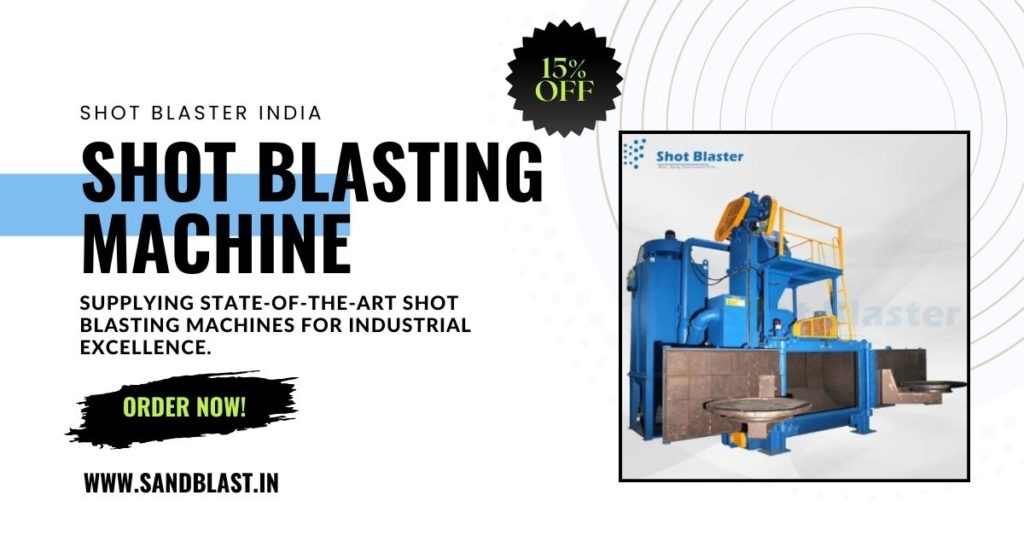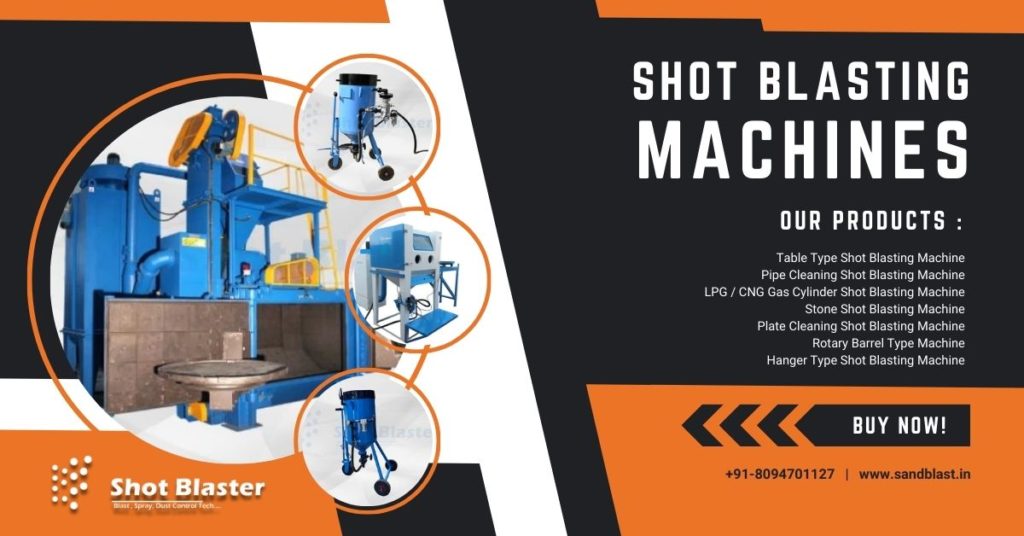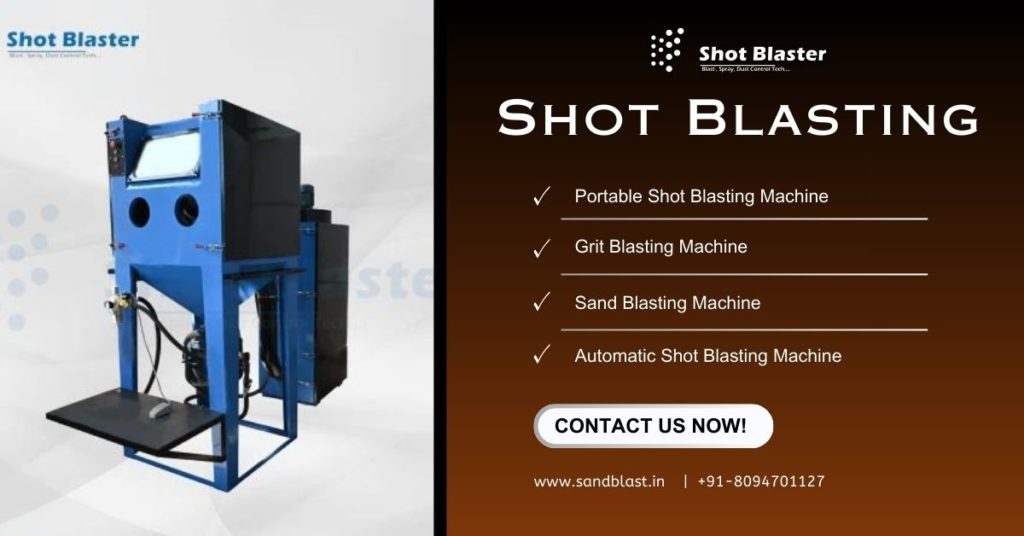Discover the future trends in rotary table shot blasting machines and shot blasters. Learn how advanced technologies, automation, and sustainability are shaping the future of surface preparation and industrial processes.

Introduction
In the dynamic world of industrial machinery, rotary table shot blasting machine by shot blasters are essential components for surface cleaning, preparation, and maintenance. These machines are used in a variety of industries, from automotive and aerospace to construction and foundries, to prepare surfaces for further processing, such as painting, coating, and welding.
As technology evolves and industries seek greater efficiency, cost-effectiveness, and environmental responsibility, the future trends in rotary table shot blasting machines are rapidly transforming. Innovations in automation, energy efficiency, and data-driven insights are revolutionizing the way shot blasting machines operate, making them smarter, more precise, and more sustainable.
In this article, we’ll explore the future trends in rotary table shot blasting machines and shot blasters, highlighting key technological advancements, emerging challenges, and the potential for growth in this critical industrial sector. So, buckle up, because the future of shot blasting is more exciting than ever before!
1. The Rise of Automation and Smart Technology
1.1 Robotics and AI Integration
One of the most significant trends in rotary table shot blasting machines is the integration of automation and robotics. As industries push for higher productivity, robotic arms, AI-powered systems, and automated controls are making their way into shot blasting operations. These advancements allow machines to operate more efficiently and with minimal human intervention, leading to reduced labor costs and improved consistency in surface treatments.
The use of AI allows shot blasting machines to learn from historical data, enabling predictive maintenance and troubleshooting. By analyzing data from sensors embedded in the machine, the system can detect potential issues before they escalate, resulting in less downtime and increased productivity.
1.2 Remote Monitoring and Control
Remote monitoring is another aspect of automation that’s gaining traction in the shot blasting industry. With advanced connectivity features, operators can monitor the performance of rotary table shot blasting machines from a distance, tracking parameters like speed, temperature, and energy usage. This real-time data provides valuable insights that help operators make data-driven decisions to optimize performance.
Some machines even have the capability for remote troubleshooting and adjustments, reducing the need for on-site personnel and cutting down on response times in case of a malfunction.
Don’t Miss Out – https://riyasingh258.blogaaja.fi/the-future-of-surface-finishing-with-airless-shot-blasting-solutions/
2. Energy Efficiency and Sustainability: The Green Revolution
2.1 Reduced Energy Consumption
As industries worldwide strive for more sustainable practices, the demand for energy-efficient machinery is growing. Rotary table shot blasting machines are no exception. Future machines are expected to be much more energy-efficient, with a focus on minimizing power usage while maximizing performance.
Advanced shot blasting machines will incorporate technologies such as regenerative braking systems, optimized motors, and energy recovery systems to recycle energy and reduce waste. These innovations will not only make shot blasting machines more environmentally friendly but also reduce operational costs over time.
2.2 Sustainable Materials and Waste Reduction
Alongside energy efficiency, the future of rotary table shot blasting machines will likely emphasize sustainability in terms of materials used and waste management. Shot blasters are known for creating a significant amount of dust and waste during the blasting process. However, as industries become more environmentally conscious, manufacturers are designing systems that minimize the amount of waste produced.
For example, the use of recyclable shot media and improved dust collection systems will reduce the environmental impact of shot blasting operations. Additionally, new materials that are both effective and eco-friendly will emerge, contributing to more sustainable production processes.
3. Precision and Customization: Meeting Industry Demands
3.1 Enhanced Surface Quality
As industries demand higher-quality finishes for their products, the need for precision in surface preparation has never been more critical. Future trends in rotary table shot blasting machines will focus on improving the precision and quality of surface treatments. Advanced blasting nozzles, fine-tuned blasting patterns, and automated controls will allow operators to achieve a consistent and uniform surface finish, tailored to the specific needs of each project.
3.2 Customizable Shot Blasting Solutions
Customization is becoming increasingly important as manufacturers strive to meet the unique requirements of different industries. Whether it’s adjusting the size and shape of the shot media, altering the speed and intensity of the blasting process, or incorporating specific features into the machine design, future shot blasters will be highly customizable.
This flexibility will allow businesses to tailor shot blasting processes to suit the specific characteristics of different materials, such as steel, aluminum, or composites, ensuring optimal results for each job.
4. Integration of IoT and Big Data Analytics
4.1 Predictive Maintenance and Data-Driven Decisions
In the future, shot blaster blasting equipment will be smarter than ever, thanks to the integration of the Internet of Things (IoT) and big data analytics. Sensors embedded within the machine will collect real-time data on key performance indicators such as pressure, temperature, and wear levels. This data will be sent to cloud-based platforms where advanced algorithms can analyze and predict maintenance needs.
Predictive maintenance is one of the most valuable features enabled by IoT technology. By identifying potential failures before they happen, businesses can perform maintenance at the right time, minimizing costly breakdowns and ensuring the machine operates at peak efficiency.
4.2 Machine Learning for Process Optimization
Machine learning (ML) is another exciting development in shot blasting technology. Through continuous learning from vast amounts of data, ML algorithms can identify patterns and suggest optimizations to the blasting process. These adjustments can improve speed, reduce waste, and enhance surface quality.
With the rise of big data and advanced analytics, rotary table shot blasting machines will become increasingly self-optimizing, with the ability to adjust processes on the fly based on real-time feedback from the system.
5. Future Trends in Safety Features and Operator Comfort
5.1 Ergonomically Designed Workstations
As machine operators’ safety and comfort become a priority, manufacturers are investing in ergonomic workstation designs for shot blasting operations. Future rotary table shot blasting machines will feature better access points, intuitive control panels, and safety mechanisms to ensure the well-being of operators.
Workstations will be designed with user-friendliness in mind, reducing the strain and fatigue often associated with long hours in industrial environments. This trend will improve operator productivity and decrease the risk of injuries, ensuring that workers remain safe and comfortable while using shot blasters.
5.2 Advanced Safety Mechanisms
In addition to ergonomic designs, rotary table shot blasting machines will incorporate advanced safety features to protect operators from hazardous conditions, such as flying debris or exposure to dust. Future machines will include enhanced protective shields, automatic shutdown systems, and air filtration technologies that improve safety while maintaining high productivity.
Learn from the best – https://riyasingh258.blogaaja.fi/how-to-choose-the-right-shot-blasting-machine-for-your-needs/
FAQs
Q1: What is a rotary table shot blasting machine?
A rotary table shot blasting machine is a type of industrial equipment used for surface cleaning, preparation, or finishing. It works by projecting abrasive media (shot) at high velocity onto the surface of a workpiece, rotating it on a table for thorough coverage.
Q2: How does automation benefit shot blasting machines?
Automation in shot blasting machines helps increase productivity, reduce labor costs, improve consistency, and minimize human error. It allows for more precise control over the blasting process and enables real-time monitoring for predictive maintenance.
Q3: What are some sustainable trends in shot blasting?
Future trends in shot blasting focus on reducing energy consumption, improving dust collection systems, using eco-friendly materials, and recycling shot media. These measures help make shot blasting operations more environmentally friendly and cost-effective.
Conclusion
The future trends in rotary table shot blasting machines are poised to revolutionize the industrial sector. From automation and AI-powered systems to energy efficiency and sustainability, these innovations are shaping the way shot blasters operate. As industries continue to demand higher precision, customization, and sustainability, rotary table shot blasting machines will evolve to meet these needs, ensuring that manufacturers stay competitive in an ever-changing market.
By embracing these future trends, businesses can improve their operational efficiency, reduce costs, and contribute to a more sustainable future. The next generation of shot blasting machines is here, and it’s smarter, greener, and more efficient than ever before!


